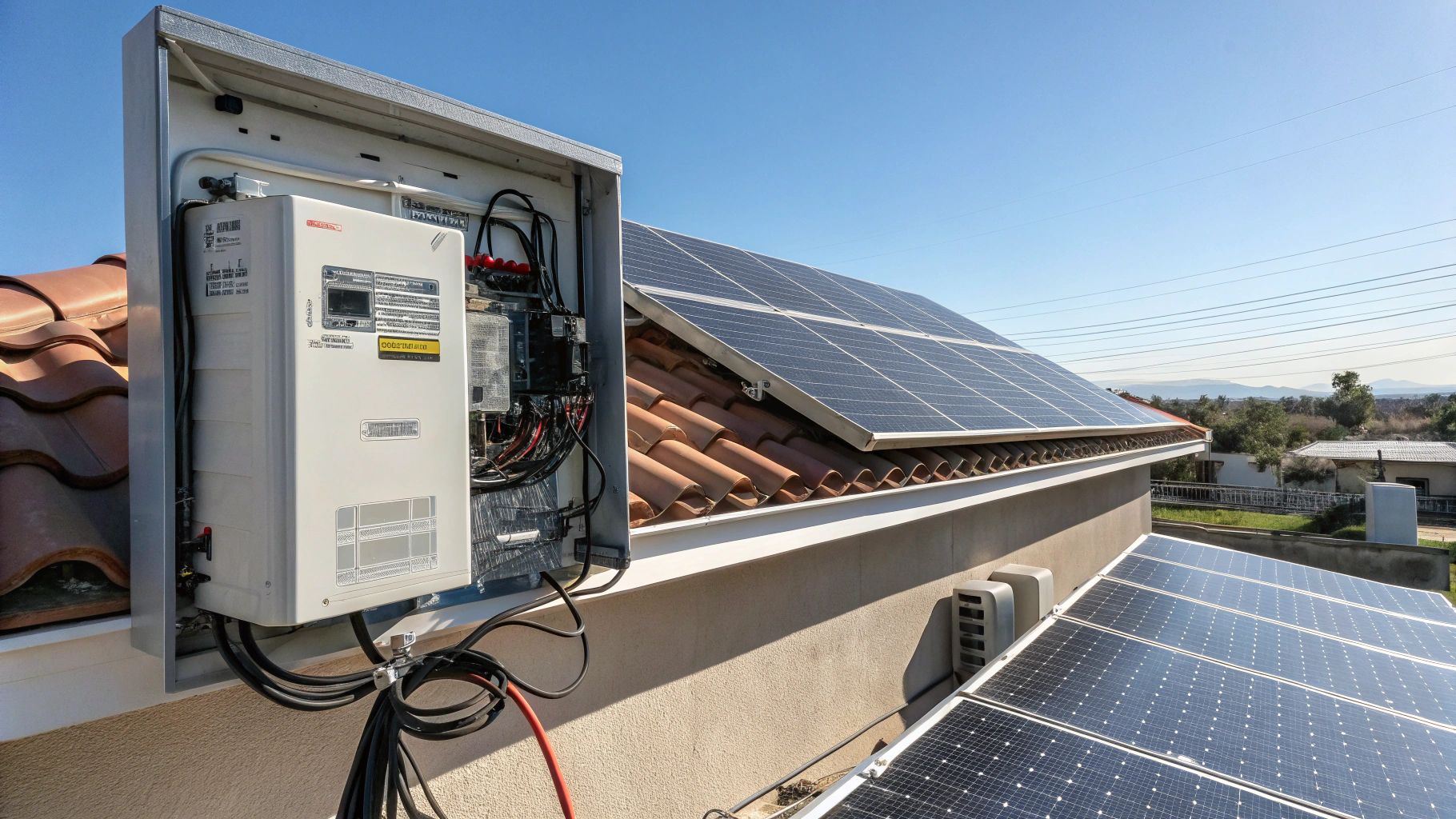
Embarking on the journey of installing solar panels atop my roof was a thrilling experience, infused with a sense of anticipation, albeit accompanied by a sprinkling of overwhelm due to the intricate details involved. Among all the elements that captured my attention, the solar inverter stood out remarkably. I couldn’t shake the question “How does a solar inverter work?” from my mind.
In its essence, the solar inverter is like a maestro transforming the direct current (DC) generated by solar panels into alternating current (AC) — the very type of electricity that powers our everyday household appliances. This conversion is paramount; it not only energizes our homes but also ensures that the voltage and frequency of the electricity sync seamlessly with the demands of the electrical grid, particularly in a grid-tied solar system. Here’s where it becomes truly fascinating: the inverter harnesses intelligent technology, such as Maximum Power Point Tracking (MPPT), to optimize energy output from the solar panels. Picture this: a compact yet highly efficient conductor ensuring that every single sunbeam is transformed into usable electricity. This is the true magic of an inverter.
If your curiosity resonates with mine, then diving deeper into the mechanics of DC to AC conversion or uncovering the advantages of MPPT might just be your next venture. I promise, grasping these concepts will enhance your appreciation for your solar setup significantly. So, why not take the plunge and explore these insights further? The knowledge you gain will undoubtedly be enlightening!
Ultimately, my exploration into the realm of solar inverters has illuminated their critical function in energy conversion and system enhancement, inspiring me — and hopefully you — to probe deeper into their intricacies and benefits.
Solar inverters convert alternating current (AC) to direct current (DC).False
This statement is false; solar inverters convert DC from panels to AC for use.
Solar inverters optimize energy output using Maximum Power Point Tracking (MPPT).True
This statement is true; MPPT helps in maximizing energy harvested from solar panels.
2. How do Solar Panels Generate DC Electricity?
3. How is DC to AC Conversion Achieved in Solar Inverters?
4. What Is the Role of MPPT in Solar Inverters?
5. How Do Solar Inverters Synchronize with the Grid?
6. What are the Safety and Monitoring Features of Solar Inverters?
Conclusion
What is a Solar Inverter and Why is it Important?
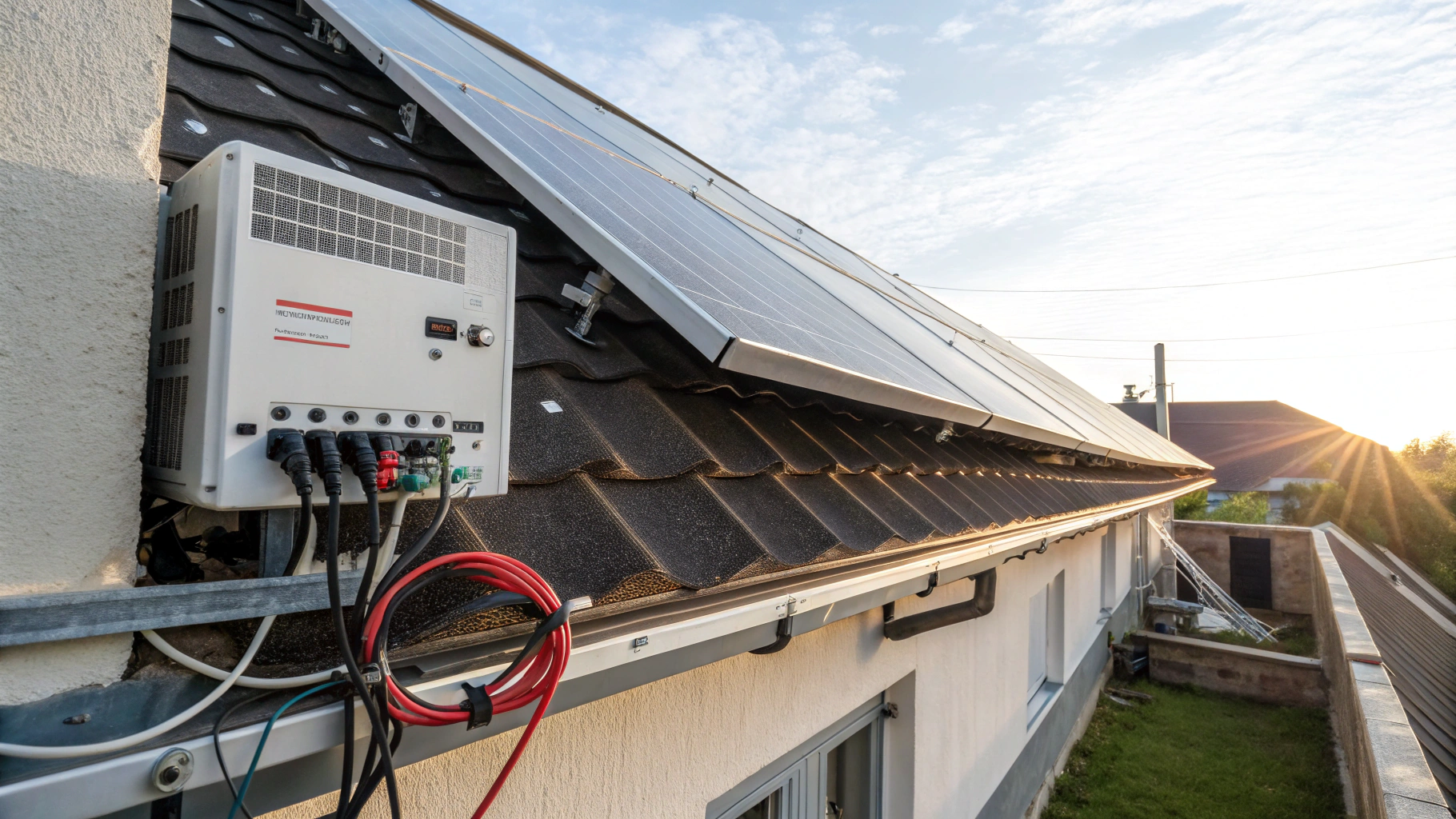
As I embarked on the exploration of installing a solar energy system, I was initially bewildered by the pivotal role that solar inverters play. However, the moment I grasped that the solar inverter serves as the very heart of any photovoltaic setup—converting the direct current (DC) generated by the solar panels into the alternating current (AC) that powers most household appliances—I felt an overwhelming sense of relief. This conversion process is vital for effectively tapping into the potential of solar energy.
Delving into the workings of solar inverters was akin to traversing a fascinating journey of enlightenment for me. These devices, by transforming DC into AC, make certain that my home operates not only smoothly but also efficiently. I discovered that there are several types of solar inverters available, including central inverters and microinverters, each offering distinct advantages. For large-scale installations, central inverters present a cost-efficient solution, whereas microinverters shine when it comes to flexibility and scalability in smaller systems.
The selection of an appropriate solar inverter is crucial, as it significantly influences both the performance and safety of the entire system. With advanced technologies such as maximum power point tracking (MPPT), solar inverters elevate energy production efficiency, boasting potential enhancements of up to 20%. Following an extensive period of research and evaluation, I ultimately identified the ideal inverter that met my specific requirements, instilling me with confidence and ensuring a seamlessly integrated solar setup.
Looking back, realizing the importance of a solar inverter marked a transformative point in my solar journey. The knowledge of their function and the significance of making an informed choice has empowered me to fully optimize my investment in solar energy. If you find yourself contemplating solar solutions for your home, I urge you to invest time in understanding solar inverters—they are a crucial component that can amplify your system’s efficiency while safeguarding your energy needs.
Understanding Solar Inverters: Their Critical Role in Solar Energy Systems
As I delved deeper into the world of solar energy systems, it became clear to me that solar inverters are essential in converting the direct current (DC) from solar panels into the alternating current (AC) necessary for powering household devices. Understanding this conversion process allows homeowners to maximize their solar energy potential effectively.
| Type of Solar Inverter | Advantages | Ideal Application |
|---|---|---|
| Central Inverter | Cost-effective for large installations | Commercial and large residential systems |
| Microinverter | Greater flexibility and scalability | Small-scale or complex residential setups |
| String Inverter | Simple installation and affordable | Residential rooftops with uniform sunlight exposure |
Solar inverters only operate with direct current from batteries.False
This is false; solar inverters convert DC from solar panels, not just batteries.
Solar inverters convert DC into AC for household appliances.True
This is true; they make solar energy usable in homes by converting current types.
How do Solar Panels Generate DC Electricity?

Upon my initial exploration into the realm of solar energy, I found myself grappling with a multitude of questions, particularly regarding the intricate workings of solar inverters. It’s truly captivating how those sleek, unobtrusive solar panels elegantly perched atop roofs manage to produce direct current (DC) electricity. The underlying science behind this phenomenon is nothing short of mesmerizing.
At their core, solar panels are made up of numerous photovoltaic cells crafted from semiconductor materials, predominantly silicon. When photons emitted by sunlight collide with these cells, a remarkable process known as the photovoltaic effect is set into motion. Essentially, these photons impart energy to the electrons nestled within the silicon lattice, propelling them into higher energy states and igniting their movement — this kinetic activity culminates in the generation of an electric current.
Yet, the true enchantment lies in the journey of those electrons. As they embark on their expedition, they engender an electric field within the solar cell due to the interaction between layers of silicon that are positively and negatively charged. This dance of electrons orchestrates a flow, or direct current (DC), that traverses beyond the confines of the panel through metallic conductive plates and wires, ultimately reaching the inverter. Think of the solar inverter as a vital interpreter for your household devices, adeptly transforming DC into alternating current (AC) electricity — the form that most residential appliances and the broader power grid can readily utilize.
In summary, the solar panels harness the photovoltaic effect to generate DC electricity, initiated by the sun’s photons invigorating the electrons in the silicon cells, which in turn creates an electric field that fosters a current. This vital DC electricity is subsequently converted to AC by an inverter for household consumption. Gaining an understanding of this fascinating process amplifies my appreciation for the efficiency with which each ray of sunlight is transformed into usable energy. If you’re contemplating making the leap into solar energy, envision this electrifying journey as it makes its way from the panel to your very own outlet. Consider this — the sun may well become your next dependable source of power!
The Science Behind Solar Panel Electricity Generation
I still vividly remember my first encounter with solar panels, and how they mystified me with their ability to generate direct current (DC) electricity. The process relies on the photovoltaic effect, where sunlight’s photons interact with semiconductor materials like silicon in the photovoltaic cells. This interaction excites electrons, creating an electric current that eventually flows through the solar inverter, converting DC into the alternating current (AC) that powers our homes. Understanding this process truly enhances my appreciation for solar energy as a sustainable resource.
| Step | Description |
|---|---|
| 1. Photon Absorption | Sunlight (photons) strikes the photovoltaic cells in solar panels. |
| 2. Excitation of Electrons | The absorbed energy excites electrons within the silicon lattice, propelling them into higher energy states. |
| 3. Creation of Electric Field | The movement of electrons generates an electric field in the solar cell due to the interaction of positively and negatively charged layers. |
| 4. Generation of DC Current | This electric field facilitates the flow of electricity, producing direct current (DC). |
| 5. DC to AC Conversion | The DC electricity flows through conductive plates and wires to the inverter, which converts it to alternating current (AC). |
Solar panels generate alternating current (AC) electricity directly.False
This is false; solar panels produce direct current (DC) electricity, not AC.
Solar inverters convert DC electricity to AC for home use.True
This is true; inverters are essential for converting DC to AC electricity.
How is DC to AC Conversion Achieved in Solar Inverters?
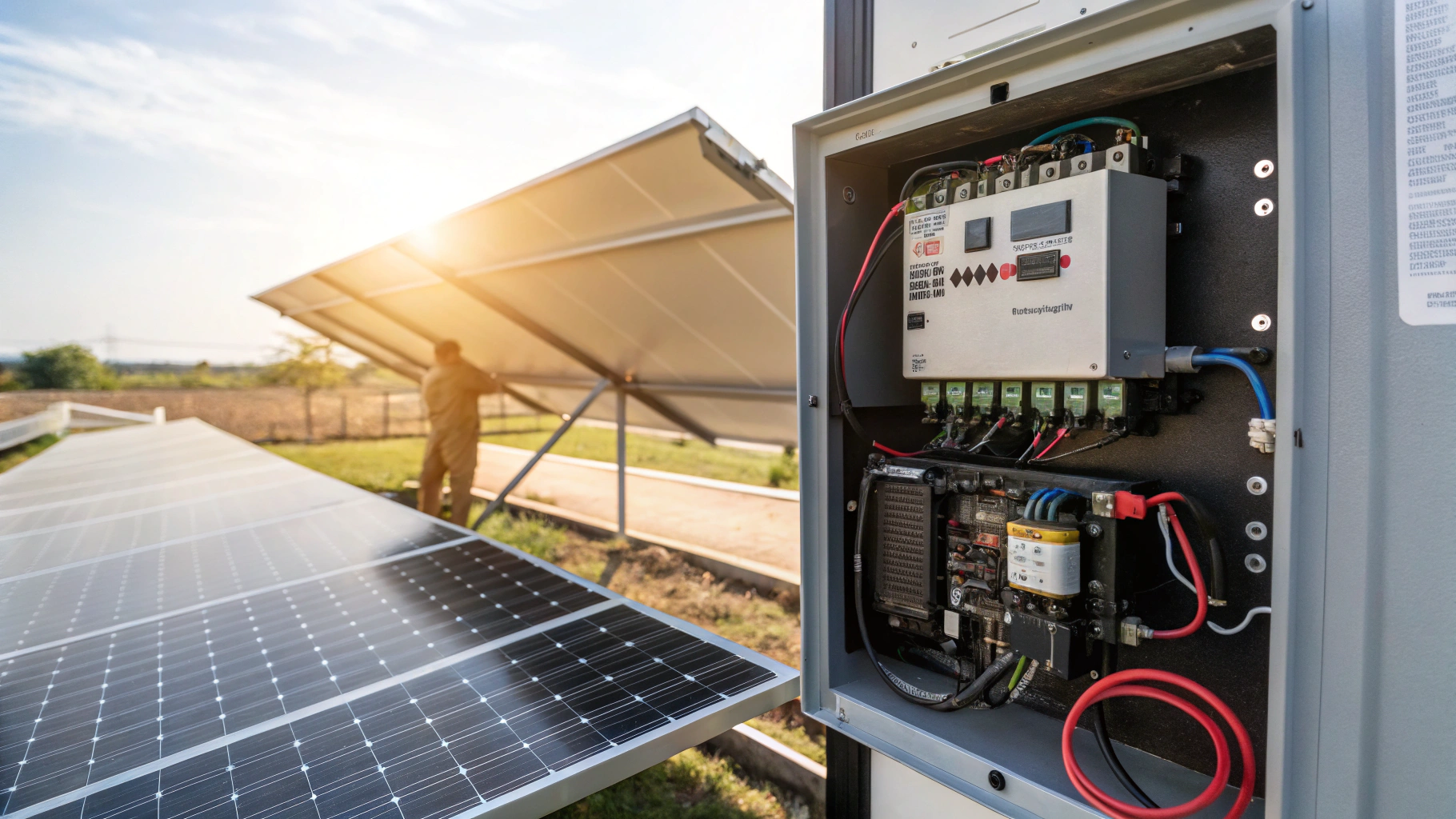
When I initially set foot on the path to comprehend the workings of a solar inverter, it felt much like plunging into a vast ocean of intricate technology. Yet, as I peeled back the layers of direct current (DC) to alternating current (AC) conversion, everything began to crystallize. Fundamentally, a solar inverter performs the essential task of converting the direct current harvested from solar panels into alternating current, which fuels our everyday appliances. This remarkable transformation relies on several pivotal components, such as oscillators and switching devices, which deftly emulate the AC signal by incessantly toggling the DC input. I must say, once I grasped the meticulousness of this process, I found it utterly enthralling.
My curiosity ignited further when I delved into the cutting-edge advancements shaping solar inverter technology. Today’s inverters achieve conversion efficiencies that soar above 98%, significantly curtailing energy loss while amplifying power output. The advent of features like real-time monitoring and remote control heralds a wealth of opportunities for enhancing household energy efficiency. This newfound understanding stirred my imagination as I contemplated the remarkable energy savings and sustainability prospects that such technology could infuse into our lives.
Grasping the intricacies of solar inverters has the potential to reshape our perception of energy consumption and instill a greater appreciation for sustainable energy solutions. So, why not take the plunge to lessen your carbon footprint by exploring the forefront of solar inverter technology? I assure you, it will be an enlightening adventure!
Understanding the Mechanics of Solar Inverter DC to AC Conversion
Imagine diving into the intricate world of solar technology, where the conversion of direct current (DC) to alternating current (AC) plays a pivotal role. I discovered that solar inverters are essential for transforming the DC generated by solar panels into AC, which powers our daily appliances. This process relies on key components such as oscillators and switches to create an AC signal through rapid toggling of the DC input. Embracing this knowledge opened my eyes to the efficiency advancements in solar inverters, now boasting conversion rates exceeding 98%, alongside features like real-time monitoring that enhance energy conservation efforts.
| Component | Function | Efficiency Impact |
|---|---|---|
| Oscillators | Create alternating current waveforms from DC input | Crucial for signal emulation |
| Switching Devices | Regulate the flow of electricity | Enhances conversion efficiency |
| Monitoring Systems | Provide real-time data on energy production | Contributes to energy efficiency improvements |
Solar inverters convert AC power from appliances into DC.False
This is false; solar inverters convert DC from solar panels into AC.
Today’s solar inverters can achieve over 98% conversion efficiency.True
This is true; modern inverters significantly reduce energy loss.
What Is the Role of MPPT in Solar Inverters?
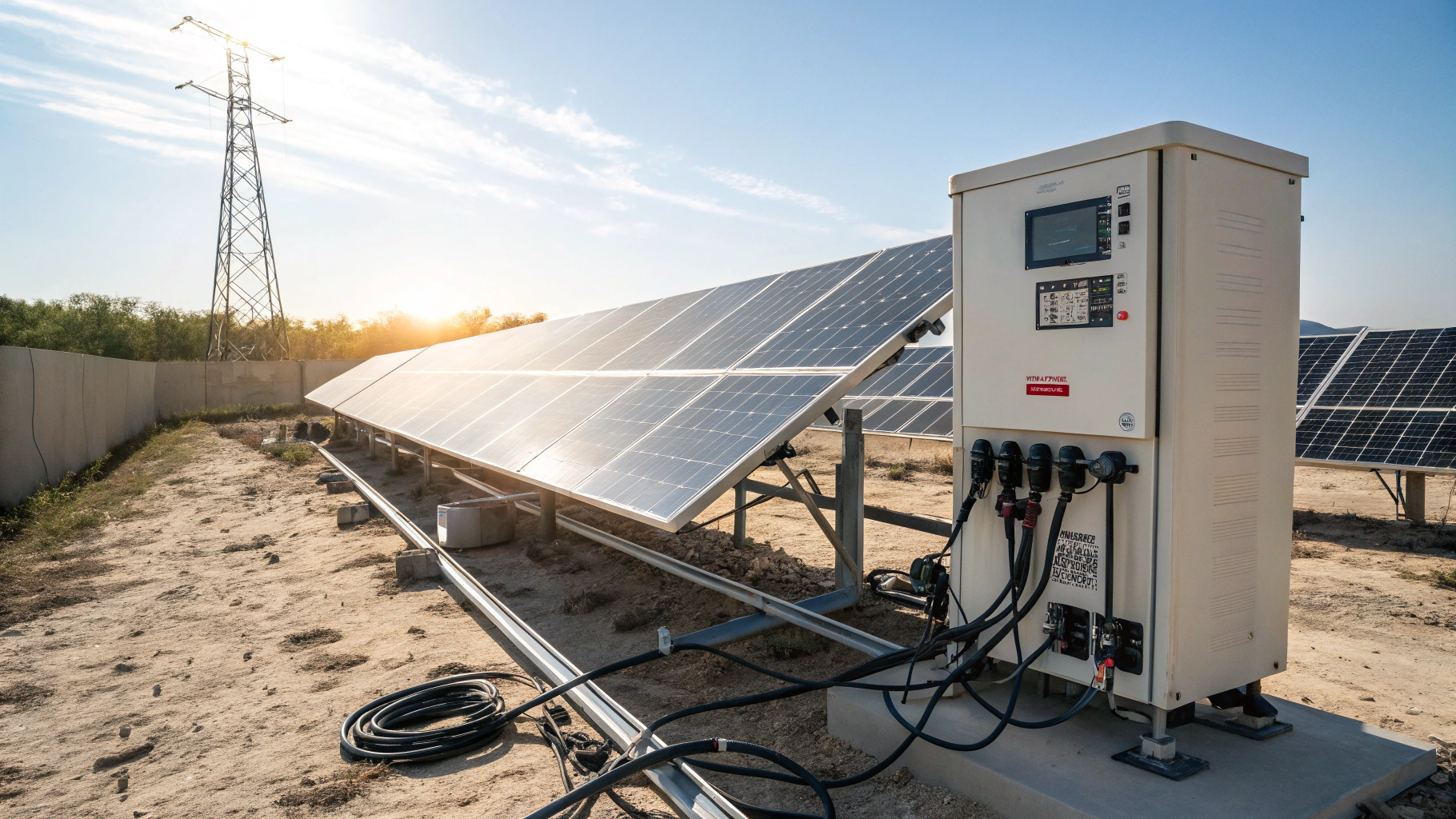
The first time I encountered solar technology, an insatiable curiosity was sparked within me, particularly about the inner workings of solar inverters and, more specifically, the remarkable Maximum Power Point Tracking (MPPT) technology. Like many, I initially found myself perplexed by the intricacies of these sophisticated devices. However, as I delved deeper, it became evident that MPPT plays an indispensable role in enhancing the efficiency of solar panels. This innovative technology continuously fine-tunes the operational conditions of solar panels, guaranteeing they consistently operate at their peak performance to maximize energy harvest.
At the outset, I was unaware of the true significance of MPPT. Yet, as my exploration deepened, I uncovered astonishing facts: MPPT can boost energy output by up to 15%, and during the winter months, this increase can soar to between 20% and an impressive 45%! By meticulously monitoring and optimizing the voltage and current of solar panels, MPPT not only boosts the efficiency of the equipment but also extends its lifespan while mitigating long-term investment risks.
Through extensive experimentation and data analysis, I have come to a definitive conclusion: MPPT is the linchpin driving the economic viability and performance enhancement of solar systems. Through sharing my insights, I aspire to captivate more individuals with this ingenious technology. If you’re eager to explore how MPPT can elevate the efficiency of your solar panels, I encourage you to delve further! I assure you, you too will be astounded by the remarkable outcomes this advanced technology can yield.
The Importance of MPPT Technology in Maximizing Solar Inverter Efficiency
Imagine looking out at a sea of solar panels, each with the potential to harvest sunlight efficiently. My journey into solar technology revealed that at the heart of this efficiency lies the Maximum Power Point Tracking (MPPT) technology. This ingenious mechanism fine-tunes the operational conditions of solar panels, ensuring they perform at their peak, thereby maximizing energy output. With the ability to boost energy yields by up to 45% during winter, MPPT significantly enhances the economic viability of solar systems.
| Aspect | Details |
|---|---|
| Functionality | Continuously optimizes voltage and current for maximum energy harvest |
| Energy Output Increase | Boosts output by up to 15%, potentially 20% to 45% in winter |
| Equipment Efficiency | Improves efficiency and extends equipment lifespan |
| Economic Impact | Enhances the overall performance and investment security of solar systems |
MPPT technology decreases the efficiency of solar panels.False
MPPT actually enhances solar panel efficiency, not decreases it.
MPPT can increase energy output by up to 15%.True
MPPT is known to boost energy output significantly, enhancing performance.
How Do Solar Inverters Synchronize with the Grid?
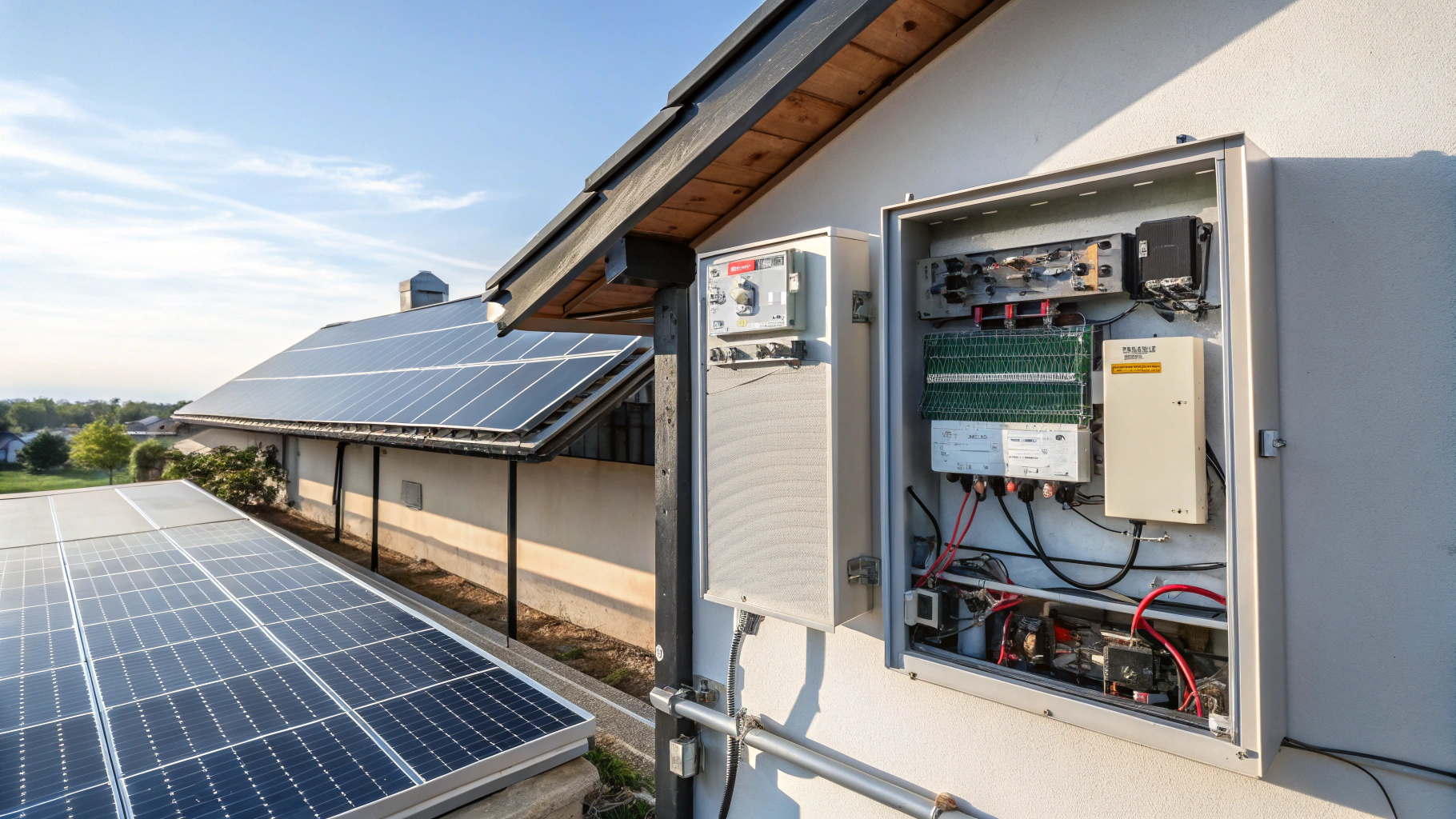
When I first delved into the mechanics of solar inverters, I was captivated by their intricate and ingenious design. At the heart of a solar inverter’s purpose lies the transformation of the direct current (DC) produced by solar panels into alternating current (AC) that can be utilized by household appliances and the power grid. For someone like me, who is deeply interested in clean energy, this revelation was nothing short of exhilarating.
As I continued my exploration, it became apparent that the inverter’s operation was not merely a straightforward conversion of electrical flow; it also entailed a sophisticated synchronization with the grid—an intricate process imbued with technical prowess. The inverter must incessantly monitor the voltage and frequency of the grid, utilizing phase-locked loop (PLL) technology to adjust its output meticulously, ensuring that phase, frequency, and voltage remain in perfect harmony. This precise synchronization is crucial for maintaining grid stability and enhancing solar energy efficiency.
Core Insight:
From the transformation of DC to AC and the synchronization with the grid, solar inverters leverage advanced algorithms and technologies to ensure a stable and efficient power supply.
As I uncovered the technological marvels behind solar inverters, I became profoundly intrigued by their synchronization methods. Techniques like synchronous mirrors and the “two bright one dim” approach represent astonishing engineering ingenuity that guarantees the stability and safety of grid connections. By employing advanced algorithms such as PID controllers and frequency-watt control, inverters can adeptly respond to fluctuations in the grid, which is increasingly vital in today’s unstable power landscape.
If you share my curiosity about energy-saving technologies, grasping how solar inverters synchronize with the grid can be an excellent entry point. I hope this ignites your interest in clean energy and perhaps encourages you to embrace solar energy more actively in your daily life. Embark on this exploration—I assure you, you will find yourself equally enchanted.
Understanding Solar Inverter Synchronization with the Grid
Did you know that solar inverters not only convert direct current (DC) into alternating current (AC) but also synchronize with the power grid? As I explored their complex design, I was fascinated to discover how these devices utilize phase-locked loop (PLL) technology to maintain harmony with grid voltage and frequency. This synchronization is critical for grid stability and the efficient use of solar energy.
| Key Function | Technology Used | Importance |
|---|---|---|
| DC to AC Conversion | Inverters | Provides usable power for appliances |
| Grid Monitoring | Phase-Locked Loop (PLL) | Ensures stable synchronization |
| Stability Techniques | PID Controllers, Frequency-Watt Control | Enhances grid security and response to fluctuations |
Solar inverters only convert AC to DC for household use.False
This statement is false; inverters convert DC to AC for usage.
Solar inverters synchronize with the grid for stability.True
This statement is true; synchronization ensures grid stability and efficiency.
What are the Safety and Monitoring Features of Solar Inverters?
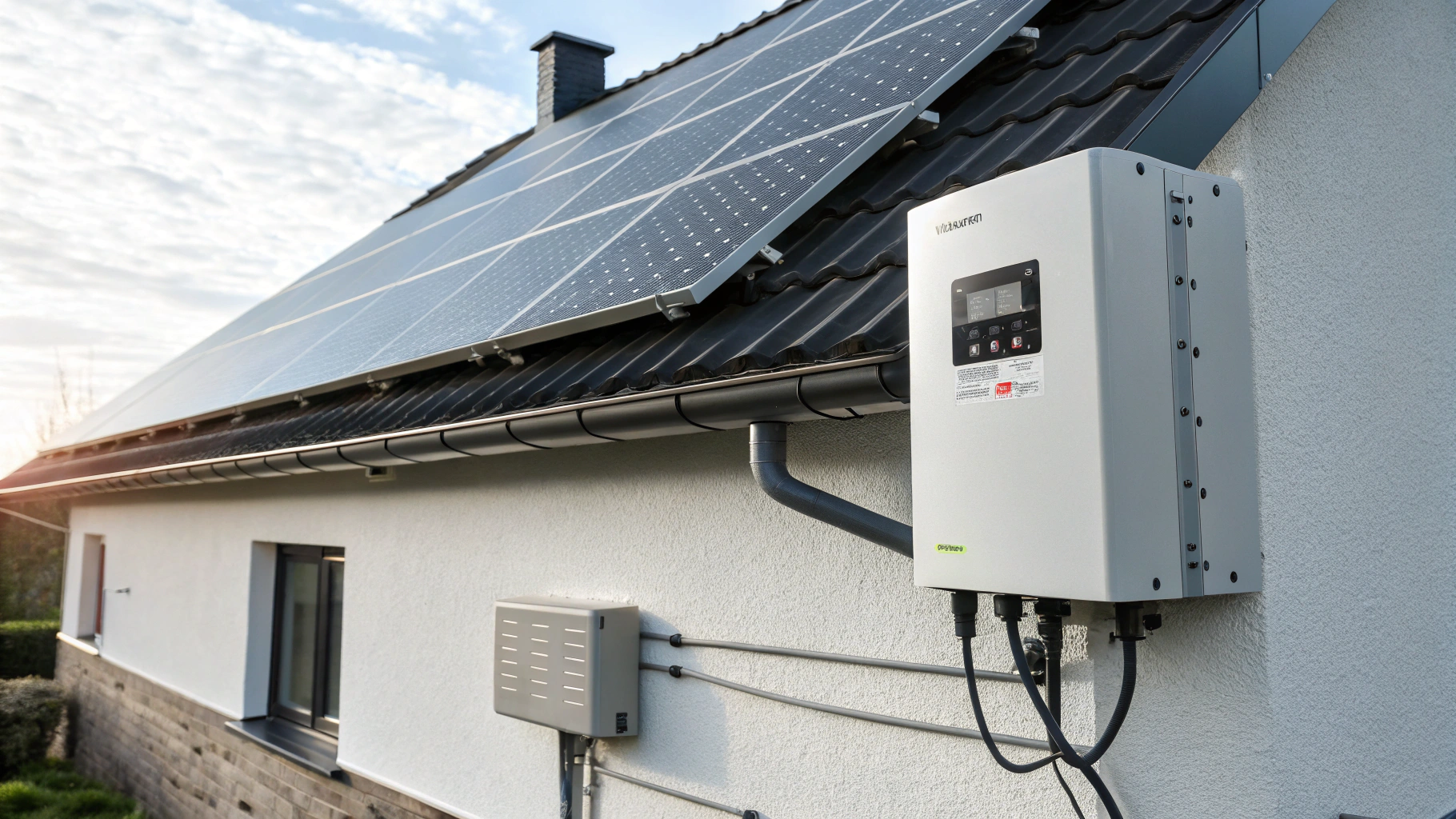
When I initially delved into the realm of solar energy, deciphering the operation of a solar inverter felt akin to translating an entirely unfamiliar tongue. Yet, as I immersed myself in the intricacies, I unearthed that these devices are nothing short of marvels of safety and innovation. At its essence, a solar inverter deftly converts direct current (DC) harvested from solar panels into alternating current (AC)—the very lifeblood that energizes our homes. However, the true beauty lies in the myriad of features that lie just beneath the surface.
To begin with, the safety attributes of these appliances are impressive. Features like overvoltage protection act as the vanguard against potential spikes from lightning strikes or unpredictable grid fluctuations, ensuring the system remains unscathed. Ground fault and arc fault detections serve as vigilant sentinels, poised to halt operations at the first hint of electrical discrepancies, thereby averting the dreaded threat of fires. Moreover, automated disconnection during grid outages is an essential characteristic that prioritizes the safety of maintenance personnel.
On the monitoring front, today’s solar inverters are remarkably astute. With the ability to perform real-time performance monitoring, I can keep a pulse on my system’s health and efficiency directly from my smartphone, even if I find myself miles away from home. It’s akin to having a personal energy assistant at my beck and call.
For those intrigued by the safety and monitoring features of solar inverters, here’s the crux: These devices are furnished with advanced safety mechanisms such as overvoltage and ground fault protection, alongside sophisticated monitoring capabilities designed to ensure effective energy utilization and system security.
Having grasped these dimensions, my confidence in managing and optimizing my solar energy usage has significantly soared. I warmly invite anyone contemplating a solar setup to explore these compelling details. It’s not merely about illuminating your abode; it’s about comprehending and leveraging the technology that guarantees your energy endeavors are both safe and efficient.
Understanding Safety and Monitoring Features of Solar Inverters
Imagine navigating a brand new world where solar energy systems thrive with unparalleled safety. I have learned that solar inverters play a pivotal role in transforming direct current (DC) from solar panels into alternating current (AC) for home use, while incorporating advanced safety features like overvoltage protection and real-time monitoring capabilities. These attributes not only safeguard my investment but also maximize energy efficiency.
| Feature | Description |
|---|---|
| Overvoltage Protection | Protects against spikes from lightning and grid fluctuations. |
| Ground Fault Detection | Stops operations in case of electrical discrepancies to prevent fires. |
| Arc Fault Detection | Identifies dangerous electrical arcs, ensuring safety. |
| Automated Disconnection | Safeguards maintenance personnel during grid outages. |
| Real-Time Monitoring | Allows tracking of system performance via smartphone, even remotely. |
Solar inverters convert alternating current (AC) into direct current (DC).False
This statement is false; inverters convert DC from solar panels to AC for home use.
Solar inverters come with safety features like overvoltage protection.True
This statement is true; solar inverters include safety mechanisms for protection.
Conclusion
In summary, solar inverters play a critical role in transforming the direct current (DC) produced by solar panels into alternating current (AC), essential for powering household appliances. This conversion not only facilitates the integration of solar energy into our homes but also ensures efficient energy use through technologies like Maximum Power Point Tracking (MPPT), which optimizes power output for enhanced performance.
As you navigate your own solar journey, take the time to explore the fascinating world of solar inverters and their functionalities. Understanding their significance equips you to make informed decisions that can elevate your solar system’s efficiency and sustainability. I encourage you to delve deeper into these technologies and maximize the benefits of your renewable energy investment.


